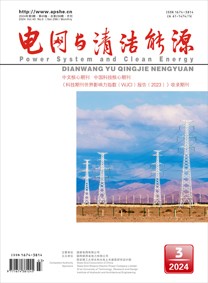| 基于LCL型感应电能双向传输系统的数学模型分析 |
| 点此下载全文 |
| 引用本文:芮典1,李梦怡2,姚钢2,周荔丹2,王杰2.基于LCL型感应电能双向传输系统的数学模型分析[J].电网与清洁能源,2018,34(1):15~20 |
| 摘要点击次数: 379 |
| 全文下载次数: 220 |
|
| 基金项目:国家自然科学基金项目(61374155) |
|
| 中文摘要:传统感应电能双向传输系统大多采用单相全桥变换器拓扑,由于功率器件开关频率较高,导致系统存在高次谐波和EMI干扰。基于全桥变换器LCL型感应电能双向传输系统建立各电气量的数学模型,尤其对电气量各次谐波下的解析表达式进行了详细的物理等效和数学推导,并对基频和谐波下的传输功率加以讨论,最后通过Matlab/Simulink仿真和样机实验验证了数学模型的正确性。 |
| 中文关键词:谐波 能量双向传输 感应电能传输 数学模型 |
| |
| Mathematical Analysis of Bidirectional LCL-IPT System |
|
|
| Abstract:A single-phase H-bridge converter is usually used in traditional bidirectional inductive power transfer systems. High switching frequency results in high harmonics and EMI interference in the system. This paper builds the mathematical model about full-bridge converter bidirectional LCL-IPT system, especially network physical equivalent and mathematical derivation are used to get the analytical expression in the condition of different harmonics. Furthermore, the paper discusses the different power transmission between fundamental frequency and harmonics. Finally, simulation results in the Matlab/Simulink and an experiment of prototype validate that the mathematical model is correct. |
| keywords:harmonics energy bidirectional transmission inductive power transfer mathematical model |
| 查看全文 查看/发表评论 下载PDF阅读器 |



